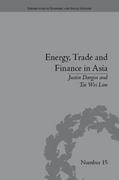QUESTION III (31 marks)
Introduction
The line-item veto, or partial veto, is a special form of veto power that authorizes a chief executive - like the president - to reject selected specific provisions of a bill, usually a budget appropriations bill, enacted by a legislature without vetoing the entire bill. Apparently, the presidents in real politics have expressed interest in a line-item veto, which would give them the power to veto parts of a bill instead of its entirety.
Details are shown in the pic below.
QUESTION 111 (31 marks) Introduction The line-item veto, or partial veto, is a specialform of veto power that authorizes a chief executive , like the president , to reject selected specic provisions of a bill, usually a budget appropriations bill, enacted by a legislature without vetoing the entire bill. Apparently, the presidents in real politics have expressed interest in a line-item veto, which would give them the power to veto parts of a bill instead of its entirety. For example, congressmen would like pork-barrel expenditures to allure voters from their district. A president however would care about spending that serves the administration 's interest like missile upgrade while slashing budgets for other items like urban renewal. In reality, for most countries, presidents have the right only to accept or veto the entire bill, without the right to selectively veto only a part of the bill. But a president has their own likes and dislikes among such expenditures, which is why many presidents like Trump, Obama and Clinton always wanted to have a line-item veto authority. It might seem that such a selective veto would unilaterally increase executive power. But it is not that simple. Questions With the above introduction in mind, consider a game between Congress and President over two national expenditure items: Urban Renewal (U) & Missile Upgrade (M). Assume that Congress likes the former and President likes the latter, but both prefer a package of the two to none. The payoffs to each player are summarized through the payoffs as below: Outcomes (Bill Passed) Payoff to Payoff to Congress PreSIdent Both U & M 3 3 U Only 4 1 M Only 1 4 Neither 2 2 Now consider the following two games, resp;ectively: ' Stage 1: Congress proposes one of the following four bills: '0' Game 13 U&jll, U only, M only, Neither. ' Stage 2: Then President decides whether (i) to sign the bill or (ii) veto the bill. Now consider the following two games, resp;ectively: _ ' Stage 1: Congress proposes one of the following four bills: ' ' U&M U only, M only, Neither. ' Stage 2: Then President decides whether (i) to sign the bill or (ii) veto the bill. _ ' Stage 1: Congress proposes one of the following four bills: . Game 11' U&M U only, M only, Neither. 0% ' Stage 2: Then President decides whether to sign or veto the bill. If both U&M were submitted, President has the right to (i) sign both or (ii) veto U (i.e. sign M) only) or (iii) veto M (i.e. sign U) only or (iv) veto both. (1) Draw game trees specifying all relevant game elements including the payoffs and nd subgame perfect Nash equilibrium for Game I and Game 11, respectively.' (2) Briey describe what lessons you can derive from this exercise









